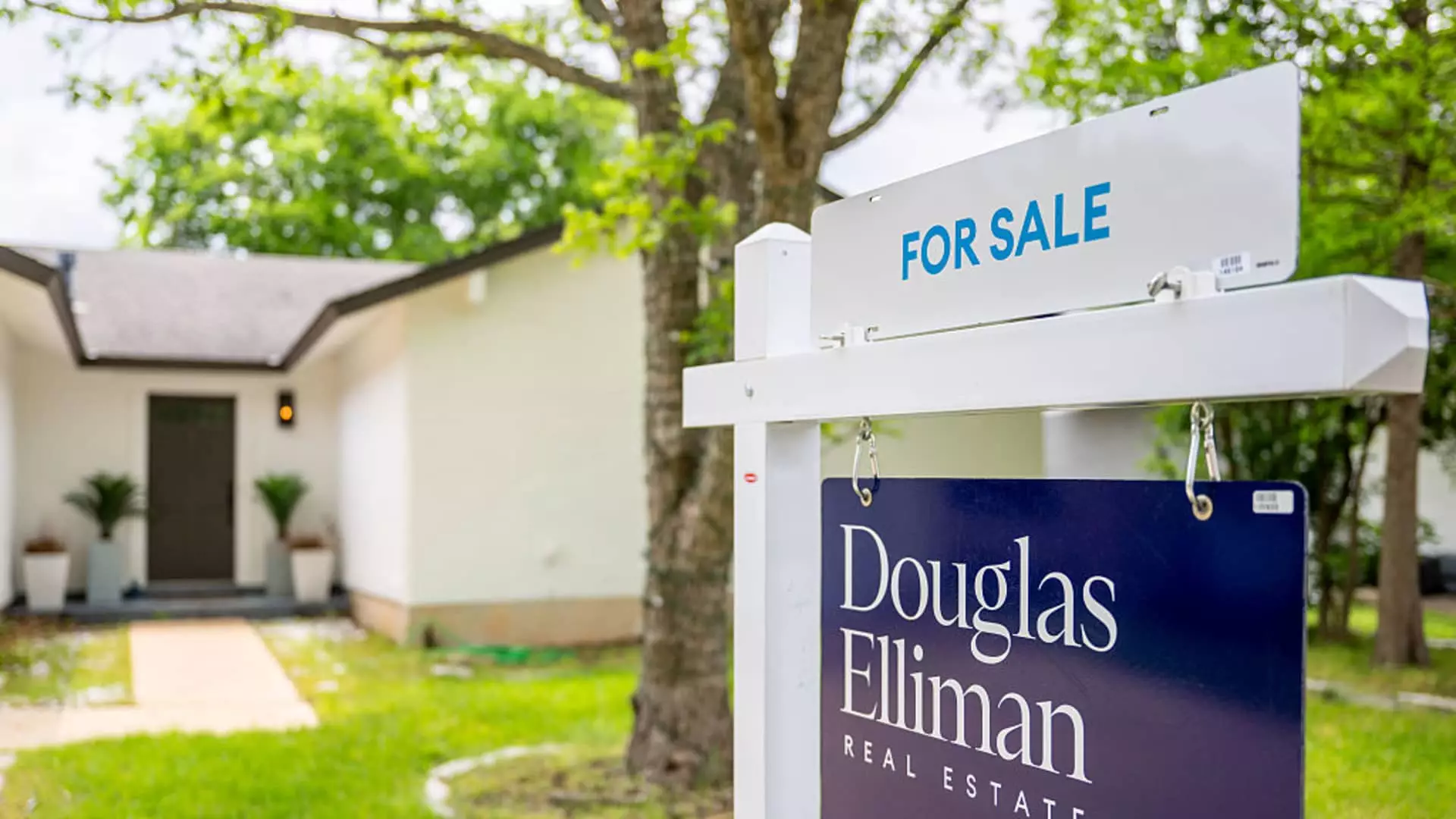In an unexpected twist, the sales of previously owned homes saw a modest increase of 0.8% in May, edging upward to an annualized rate of 4.03 million units as reported by the National Association of Realtors (NAR). While many were bracing for a decline—predicted at around 1%—this slight uptick might mirror a broader reluctance among potential buyers to dive into a market plagued by high mortgage rates. In reality, while any increase might be viewed as a positive sign, the context paints a much more ambiguous picture.
It is essential to understand that a 0.8% surge, juxtaposed with a year-over-year decline of 0.7%, points towards a market that is not exactly thriving but merely staving off disaster. These figures, particularly in a landscape marked by heightened mortgage rates—hovering consistently over 7% as of April—validate the skepticism of analysts and the hesitance of buyers. Despite some pockets of growth, particularly in the Northeast, the overarching trend remains sluggish.
The West Coast Woes: A Pricey Downturn
Notably, the West Coast—traditionally seen as a bastion of real estate prosperity—has taken a hit. With sales dropping by a staggering 5.4%, it appears that the allure of expensive coastal living is waning, at least for now. High prices are dictating market dynamics, creating a barrier for many prospective homeowners, particularly first-time buyers who are still trying to enter a market that feels increasingly out of reach.
The disparity among regions is telling. As the NAR indicates, while the Midwest and South experienced slight upticks, the West’s contraction signifies a broader trend where affordability weighs heavily on buyer sentiment. It becomes increasingly clear that the geographical variances in market performance underscore the consequences of socioeconomic divides—areas with higher costs of living suffer more pronounced slumps as everyday buyers are squeezed out.
The Inverse Relationship: Supply vs. Demand
One significant factor influencing this fragile market balance is an increase in housing supply. The availability of homes shot up over 20%, totaling 1.54 million units at the end of May. While this increase suggests a healthier inventory, it’s essential to consider that a high supply amidst weak demand can lead to price stagnation or decline, contrary to traditional economic theory. Given the current sales pace represents only a 4.6-month supply, it’s a reminder that we’re still in a historically light inventory phase.
This burgeoning supply, however, seems to be at odds with the prevailing economic reality. As the median price climbed to $422,800—a 1.3% increase year-over-year—one has to wonder how long buyers can sustain this upward pressure on prices. Even with more homes available, the high cost remains a formidable obstacle for many. The 28% of homes selling above list price serves as a testament to the remarkable demand in an otherwise stagnant market, yet this should be treated with caution. Buyers are still wary, and the fear of future economic instability might override immediate decisions to purchase.
First-Time Buyers: A Dwindling Hope
Perhaps the most troubling aspect of this latest report is the continuing decline in first-time buyers, which fell to 30% of total transactions—a slight dip from 31% the previous year. The situation presents a bleak outlook for the future, as these new entrants are essential for a healthy housing market. Without them, we risk stagnation and economic repercussions that could ripple through the broader economy.
Additionally, a significant increase in all-cash transactions—up to 27%—indicates that only wealthier buyers are actively engaging in the market, further sidelining those who rely on financing. The increase in days on the market—from 24 to 27—further compounds the challenge, potentially signaling a jittery buyer confidence and reinforcing the idea that the housing market is still in recovery mode, albeit at a snail’s pace.
With the possibility of future interest rate reductions, there lies a flicker of hope for revitalization within the housing sector. Yet, until we overcome prevailing economic obstacles and restore confidence among potential homeowners, the path forward remains fraught with uncertainty. The fluctuating tide of the housing market demands vigilant observation, lest we find ourselves further ensnared in a web of economic incompatibility.


Leave a Reply